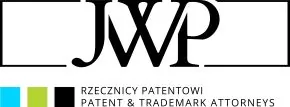Can inventions based on artificial intelligence be patented? Until recently, there were no clearly defined rules for applying for protection of solutions related to artificial intelligence and machine learning based on computational models and algorithms. Indeed, the provisions of the Polish Industrial Property Law Act (as of December 2018, Article 28 (5)) still do not allow protection for such solutions; however, on 1 November 2018 the European Patent Office (EPO) took up the challenge and introduced some guidelines in this area.
The new EPO regulations allow for the possibility of obtaining a patent for such solutions, but in order to qualify strict conditions must be met. First of all, the solutions must be classified as mathematical methods and therefore cannot constitute a stand-alone solution as such. Second, according to the EPO's guidelines, the solutions must be of a technical nature, i.e. they must use technical means such as a computer or other device. If not, they are excluded from patentability (pursuant to Article 52 (2) and (3) of the European Patent Convention). One example of such a non-technical solution is, according to the EPO, the method of performing a Fast Fourier Transformation on abstract data, which, despite being a mathematical method as such, does not specify the use of any technical means. In another example offered by the EPO, classifying text documents only in relation to their textual content will also be perceived as non-technical and would therefore be non-patentable.
Often the first look at a particular invention suggests that the solution is of a technical character. This is the case, for example, when we want to patent an invention whose subject matter is, for example, a "support vector machine" or a "reasoning engine" – the terms "machine" and "engine" seem to indicate the existence of a technical device. However, because they can also refer to abstract models lacking a technical character, such solutions are examined very scrupulously by EPO experts during the application procedure.
An example of an artificial-intelligence and machine-learning solution that would be patented by the EPO is the use of a neural network in a heart-monitoring apparatus designed to identify irregular heartbeats. Examples of technical character may also include classification of speech signals, digital audio or video, or digital images. It is important that patent applications directly or indirectly indicate a close link between the technical objective and the stages of a given method. A general objective, such as "control of the technical system", will not be sufficient.
The next step after establishing the technical nature of the solution is to verify whether the solution is new and has an inventive step. If all the necessary conditions for considering the solution as an invention are met, we can start the patenting procedure.
The content of this article is intended to provide a general guide to the subject matter. Specialist advice should be sought about your specific circumstances.


